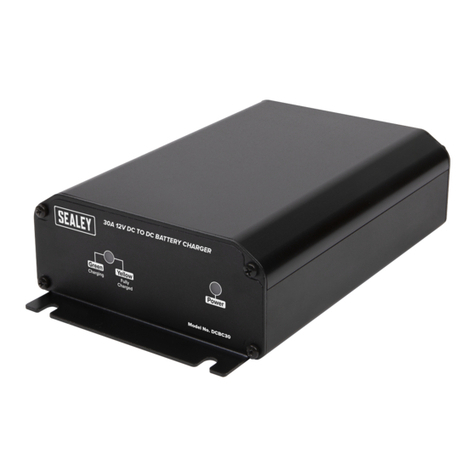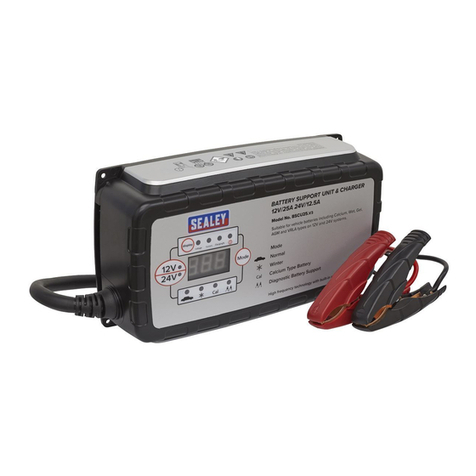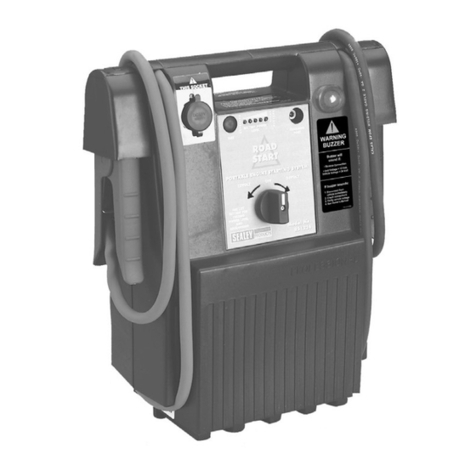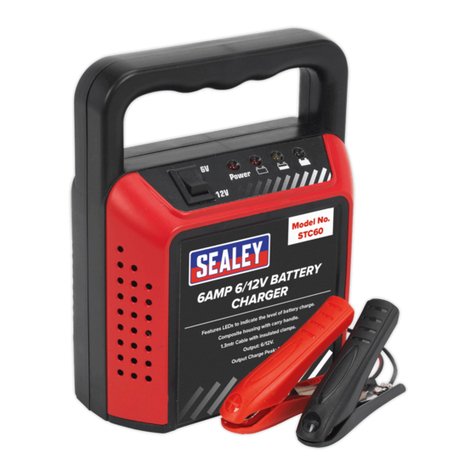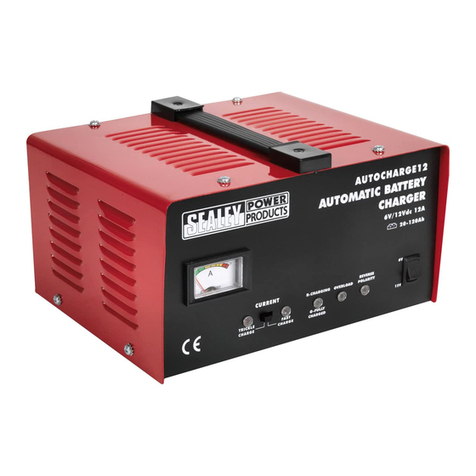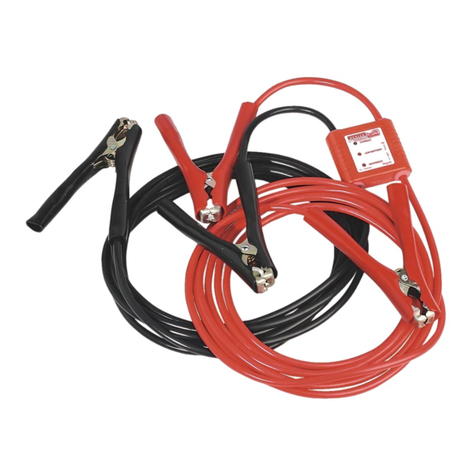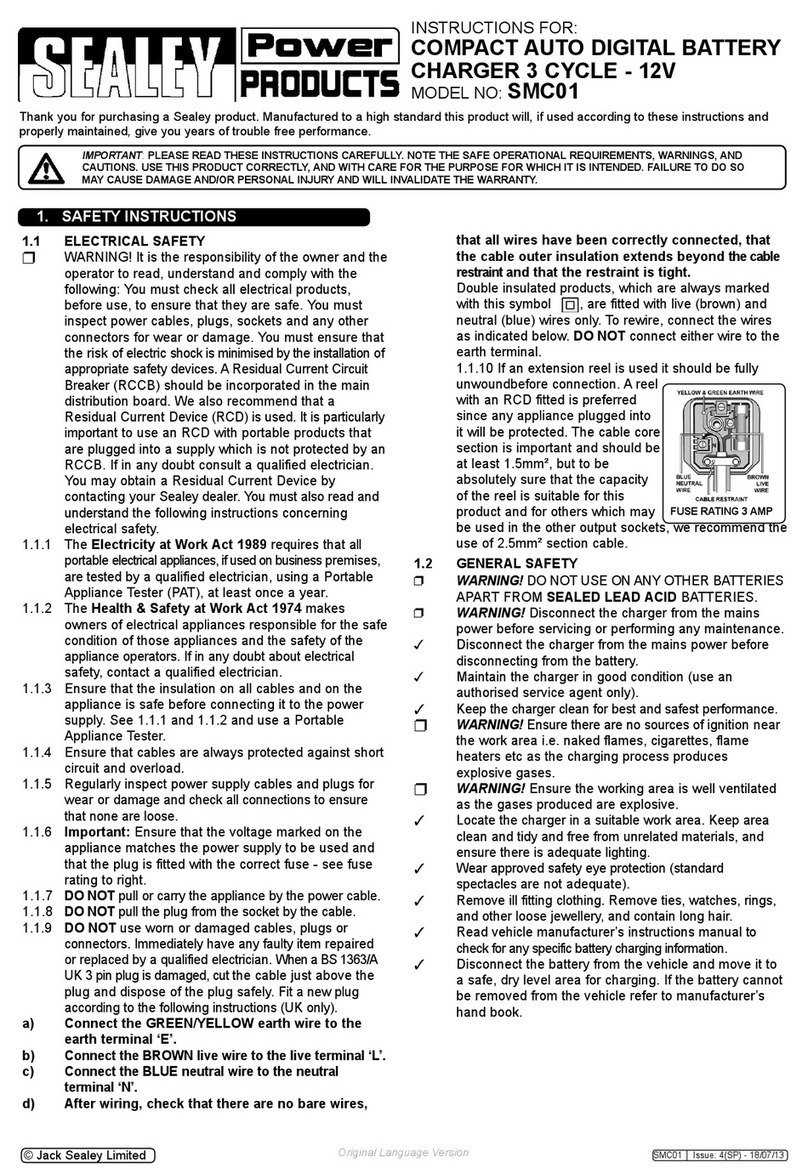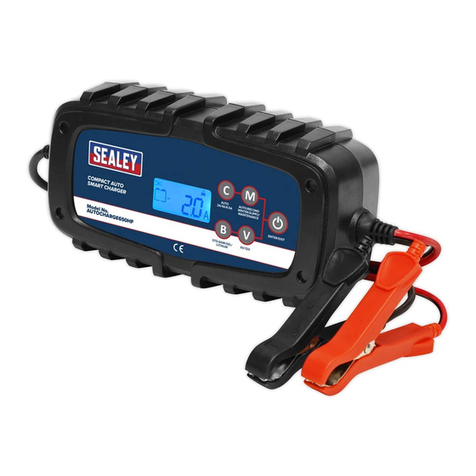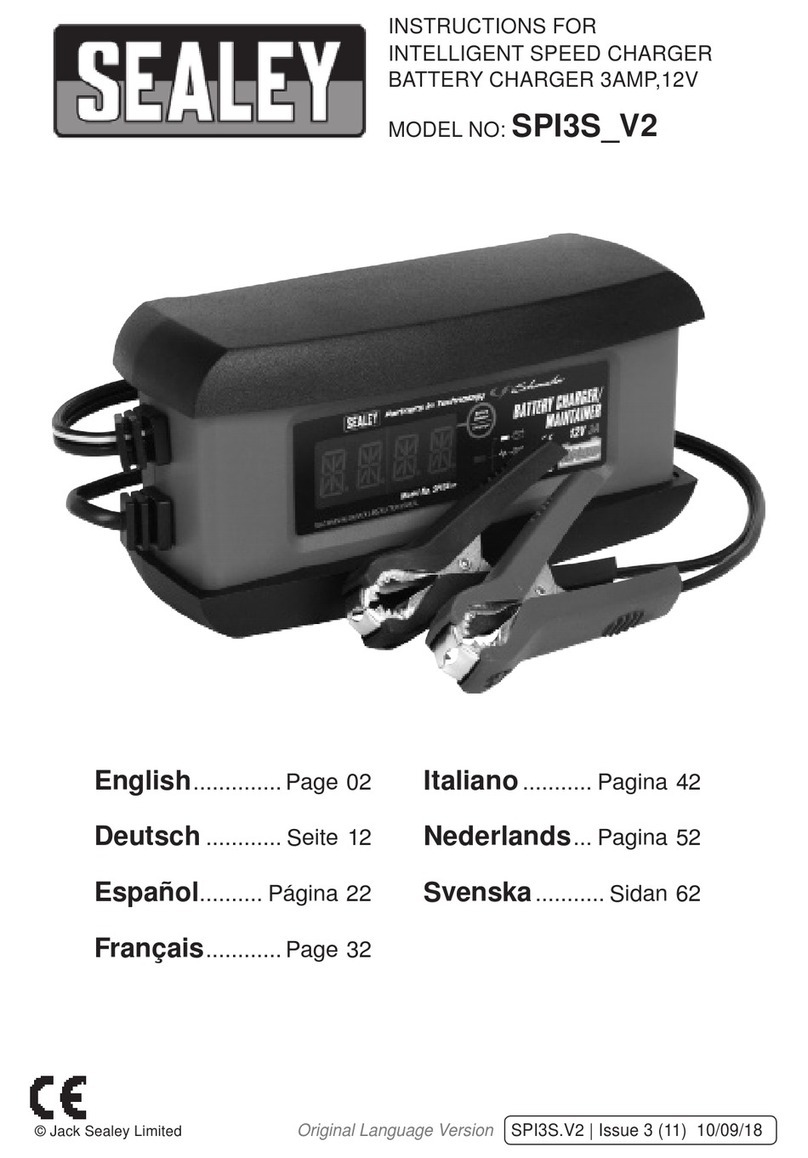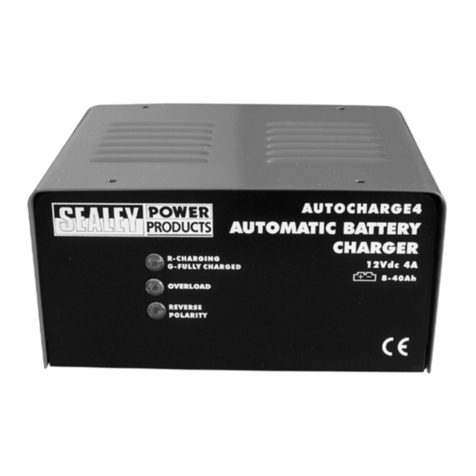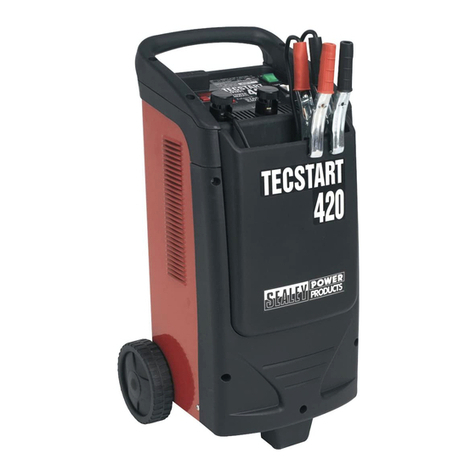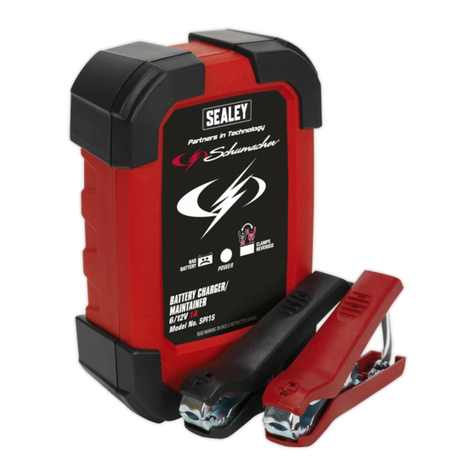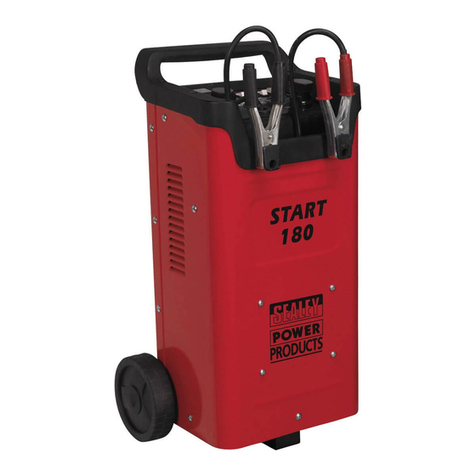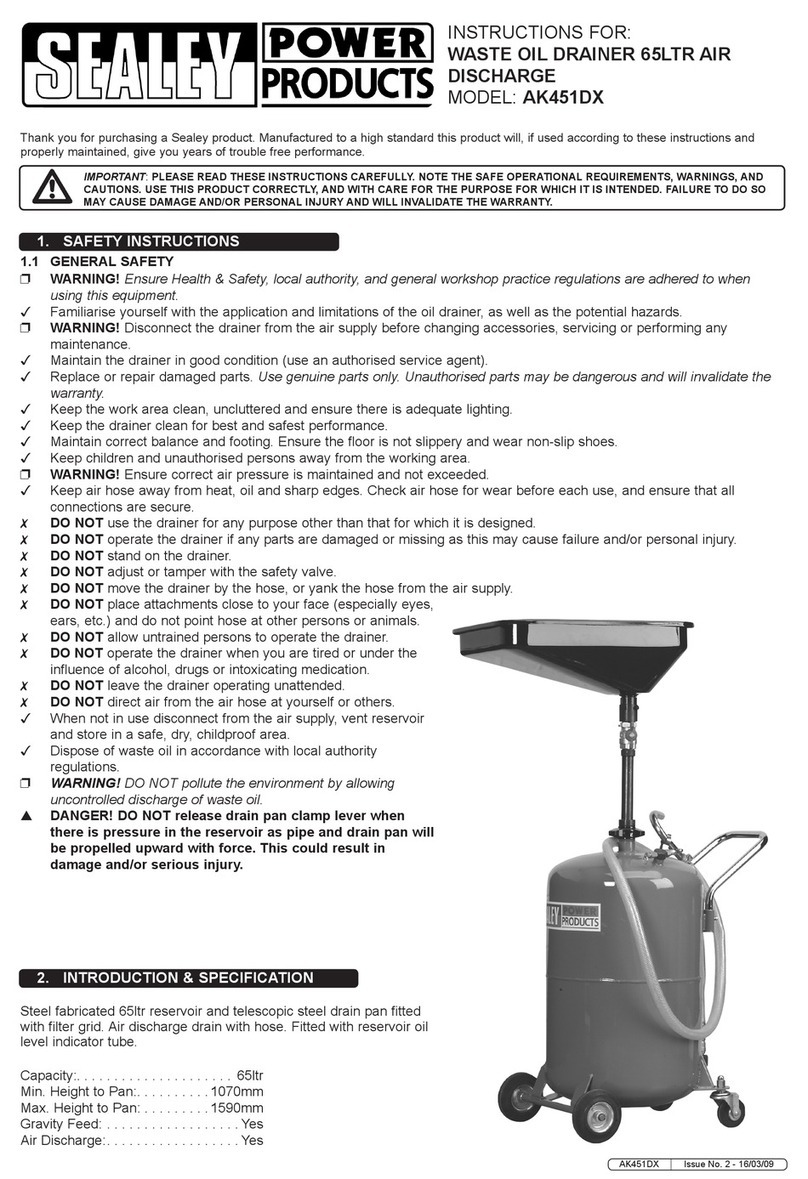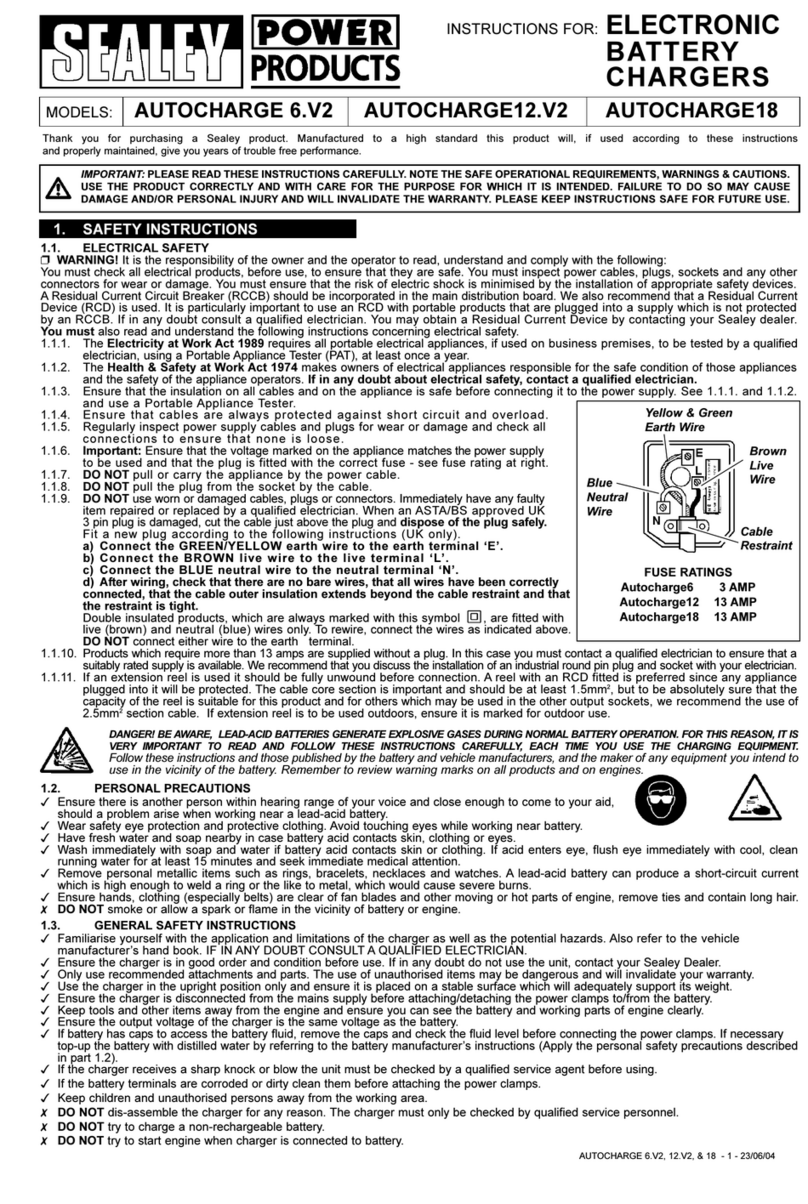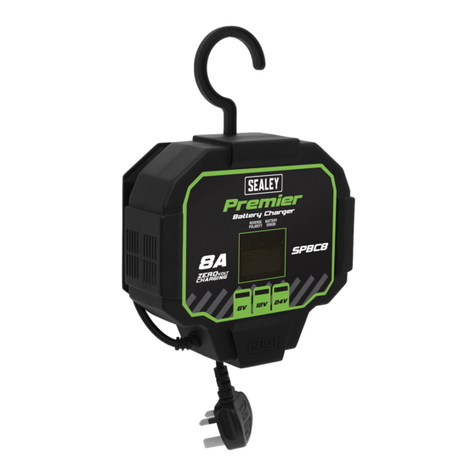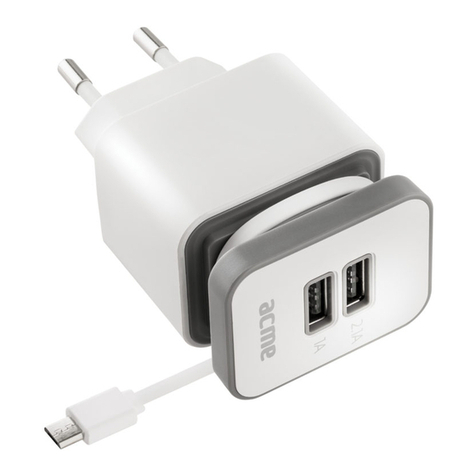6.5.5.Error codes
The errors that may be reported are described in Table 1
6.6. Battery charging
6.6.1. Charging batteries connected to the vehicle
6.6.1.1. Before starting to charge the battery, make sure the power supply lead is not plugged into the mains supply.
6.6.1.2. Locate the vehicle’s earthing point, which is normally connected to the negative battery terminal.
6.6.1.3. Charging a battery with negative earth, grounded to the vehicle’s chassis.
• Connect the output lead with the red clamp to the positive terminal (+) of the battery.
• Connect the output lead with the black clamp to the vehicle’s earthing point, keeping it away from the battery and from the
fuel pipe.
6.6.1.4. Charging a battery with positive earth, grounded to the vehicle’s chassis.
• Connect the output lead with the black clamp to the negative terminal (-) of the battery.
• Connect the output lead with the red clamp to the vehicle’s earthing point, keeping it away from the battery and from the
fuel pipe.
6.6.2. Connecting batteries that are not connected to a vehicle
6.6.2.1. Before starting to charge the battery, make sure the power supply lead is not plugged into the mains supply.
6.6.2.2. Connect the output lead with the red clamp to the positive terminal (+) of the battery.
6.6.2.3. Connect the output lead with the black clamp to the negative terminal (-) of the battery.
ATTENTION: Make sure both clamps of the output leads generate a suitable contact with their corresponding terminals.
6.6.3. Operating the charger
6.6.3.1. Once the output leads have been connected to the battery, plug the power supply lead of the battery charger into the mains,
making sure the voltage matches the nominal voltage of the battery charger (230V-50Hz); having done this, the charger will emit an
acoustic signal for 0.5 seconds, and all the LED indicators on the control panel will switch on for 2 seconds; at this stage, the
display shows “- - - -”.
6.6.3.2. The battery charger is congured in “stand-by” mode; for example: ON LED lit, WET LED lit, CHARGE LED 5-50Ah lit. The LEDs light
up differently based on the last programme saved (see section “Saving Charging Cycles”).
6.6.3.3. At this stage, with the battery charger in “stand-by” mode, set the charging parameters suitable for the type of battery to be charged,
using the buttons on the control panel. The charging parameters selected are displayed by the corresponding LED, which switches on.
6.6.4. Selectable charging parameters:
• Function key: (see section A – Operating Modes: “Function”) depending on the work cycle, select:
- Flash, Charge or Recovery.
• Amperage key: (see section B – Supply and charging mode: “Amperage”)
6.6.4.1. Based on the supply current required to support the battery voltage during reprogramming operations, you can select four different
supply currents:
DISPLAY INDICATION
CAUSE SOLUTION
E01 Leads disconnected, leads short-circuited. Position the clamps correctly and start
charging the battery again (see section
“Operating the Charger”).
Battery completely short-circuited. The battery could be defective. Contact your
nearest battery service centre.
E02 Battery faulty or unrecoverable.
No current accepted after 20 hours of
recovery.
The battery could be defective. Contact your
nearest battery service centre.
E03 Internal overheating of battery charger.
Battery charger overload.
Remove any objects that could be covering
the ventilation area of the battery charger or
move it to a cooler area. Wait for the battery
charger to start again automatically.
E04 Voltage error. Set the voltage corresponding to that of the
battery again. Start charging the battery again
(see section, “ Operating the charger”).
One or more elements of the battery has/have
short-circuited.
The battery could be defective. Contact your
nearest battery service centre.
E05 Battery voltage too high compared to that set
(you are attempting to charge a 24V battery.
Only use the battery charger with batteries
supported at 12V. Start charging the battery
again (see section “Operating the charger”).
E06 Battery capacity excessive.
Unable to reach end condition.
Use a battery charger with greater capacity.
E07 and LED
REVERSE
The clamps of the output leads are not
connected correctly to the battery.
Position the clamps correctly and start
charging the battery again, (see section
“Operating the charger”).
E08 Excessively high output current. Current
exceeds maximum limit.
Reduce battery absorption.
BSCU100 | Issue:1 09/11/15
Original Language Version
© Jack Sealey Limited


